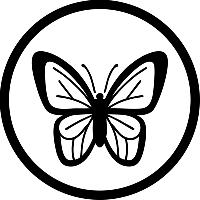Sedum, Cliff Stonecrop 'Lidakense'




Out of stock
Coming soon, still growing- Sun Preference
- Full-Sun
- Bloom Time
- July, August, September, October
Description
Low mounds of blue-grey foliage tinged purple at the edges; starry pink flowers in late summer.
Minnesota's Largest Selection of Perennials
Discover an unparalleled selection of perennials at Gertens! With the largest variety in Minnesota, we offer endless options of colorful perennials, natives, and pollinator plants to beautify your garden year after year. From vibrant flowers to lush foliage, our perennials are perfect for adding beauty and charm to your outdoor space. Visit Gertens today and see why we're known as Minnesota's Destination Garden Center!
Details
Height: 6 inches
Spacing: 7 inches
Sunlight: ![]()
![]()
Hardiness Zone: 3b
Description:
Low mounds of blue-grey foliage tinged purple at the edges; starry pink flowers in late summer
Ornamental Features
Lidakense Sedum is blanketed in stunning hot pink star-shaped flowers at the ends of the stems from late summer to late fall. Its attractive succulent round leaves emerge silvery blue in spring, turning grayish green in color with hints of purple throughout the season. The fruit is not ornamentally significant. The red stems are very colorful and add to the overall interest of the plant.
Landscape Attributes
Lidakense Sedum is a dense herbaceous perennial with a mounded form. Its relatively fine texture sets it apart from other garden plants with less refined foliage.
This is a relatively low maintenance plant, and is best cleaned up in early spring before it resumes active growth for the season. Deer don't particularly care for this plant and will usually leave it alone in favor of tastier treats. It has no significant negative characteristics.
Lidakense Sedum is recommended for the following landscape applications;
- Mass Planting
- Rock/Alpine Gardens
- Border Edging
- General Garden Use
- Groundcover
- Container Planting
Planting & Growing
Lidakense Sedum will grow to be only 6 inches tall at maturity, with a spread of 12 inches. When grown in masses or used as a bedding plant, individual plants should be spaced approximately 7 inches apart. Its foliage tends to remain low and dense right to the ground. It grows at a slow rate, and under ideal conditions can be expected to live for approximately 10 years.
This plant does best in full sun to partial shade. It prefers dry to average moisture levels with very well-drained soil, and will often die in standing water. It is not particular as to soil pH, but grows best in poor soils, and is able to handle environmental salt. It is highly tolerant of urban pollution and will even thrive in inner city environments. This is a selected variety of a species not originally from North America. It can be propagated by division; however, as a cultivated variety, be aware that it may be subject to certain restrictions or prohibitions on propagation.
Lidakense Sedum is a fine choice for the garden, but it is also a good selection for planting in outdoor pots and containers. It is often used as a 'filler' in the 'spiller-thriller-filler' container combination, providing a mass of flowers and foliage against which the thriller plants stand out. Note that when growing plants in outdoor containers and baskets, they may require more frequent waterings than they would in the yard or garden. Be aware that in our climate, most plants cannot be expected to survive the winter if left in containers outdoors, and this plant is no exception. Contact our store for more information on how to protect it over the winter months.
More Information
| Common Family Name | Stonecrop |
|---|---|
| Gerten Grown Plants | Gerten Grown Plants |
| Sun Preference | Full-Sun |
| Bloom Time | July, August, September, October |
| Mature Spread (Range) | Under 12" |
| Mature Height (Range) | 7-12" |
| USDA Hardiness Zone | 3, 4, 5, 6, 7, 8, 9 |


